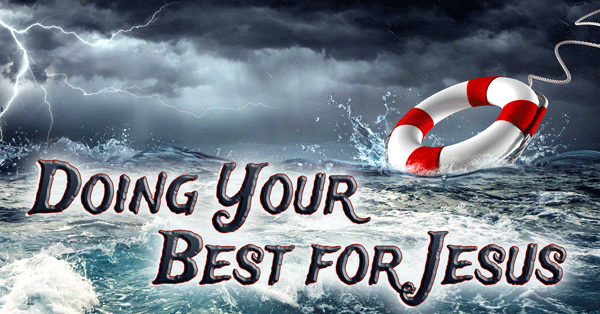
I find it fascinating to learn the history behind some of the great hymns. One of those hymns is Have I Done My Best for Jesus? Recently, David Cloud of Way of Life Literature (https://www.wayoflife.org/) featured the story of Edward Spence, whose amazing act of heroism inspired the writing of this timeless hymn.
Edward Spencer was a student at Garrett Biblical Institute in Evanston, Illinois, on Lake Michigan.
On the morning of September 8, 1860, Ed heard the news that the Lady Elgin, an overloaded steamship, had collided with the lumber-hauling schooner Augusta and sunk. People were drowning, and nothing could be done because of the heavy waves and strong currents.
Ed ran to the shores of the lake and saw that the situation was indeed serious. People were floating on pieces of wreckage in the waters, close enough to shore for their cries of help to be heard but unable to swim to safety.
Without hesitation, Ed stripped himself of excess clothing and dove into the rolling waves. He was able to reach the first person, a woman who had clung to a piece of wreckage for hours and was totally exhausted, and bring her to shore. He later said, “Then the struggle began. The huge breakers were forcing us towards the shore—keeping us buried much of the time—and the strong undertow was tending to carry us back out into the lake. It was a struggle indeed, and I was gaining but little when two tall, stout biblical students, to whom I had signaled, came to our relief” (cited from Josiah Currey, Chicago: Its History and Its Builders).
He repeated this heroic act several more times before onlookers and friends began to say, “Ed, you’ve got to stop. You’ve done all you can. You’ll kill yourself if you keep going!” Ed did not hesitate. He replied, “I’ve got to do my best,” and plunged again into the water. On one trip, he was hit in the head and injured by a piece of wreckage.
Ed rescued 17 people in 16 trips in that pitching, rolling storm. After the 16th trip, he collapsed unconscious on the shore, unable to go on. He lay there, repeating, “Have I done my best, fellows? Have I done my best?” All night he battled for his life in the infirmary, continually repeating, “Have I done my best, fellows? Have I done my best?”
Ed Spencer had done his best, but it cost him his health. He lived the rest of his life as a semi-invalid due to injuries sustained during the rescue. It was in Phoenix, Arizona, in a humble cottage, that Ensign Edwin Young found him. Mr. Young, Dean of the School of Music at Hardin-Simmons University, had heard his story and heard that he could be found in Arizona. He found a man who was no longer a robust athlete but a shadow of the strong man he once was.
During the course of their visit, Mr. Young commended him for his heroic action and asked how he had been recognized during his life by the people whose lives he had saved that day. With tears streaming down the invalid’s cheeks, he replied, “Not one ever came back to even say thank you.”
It was the retelling of this story that led Ensign Edwin Young to write, “Have I Done My Best for Jesus?”
https://www.wayoflife.org/reports/have_i_done_my_best_for_jesus.html
1 Corinthians 9:23
And this I do for the gospel’s sake, that I might be partaker thereof with you.
How many of us would risk everything to rescue the perishing from certain death? Jesus Christ did. As the storm clouds of Judgment loom in the distance and the world gets darker by the day, it’s time to sling our life-preserving gospel materials and Bibles over our shoulders and head out into the rough seas of the world looking for those who need to be rescued.
Until the Nets are Full,
P.S. In case you missed it, you might want to check out our new video, Eternal Truth. You can watch it or listen to it by clicking on the links below. Pass it around to others to encourage and help equip them with eternal truths for reaching the lost!
Video message
https://www.youtube.com/watch?v=NM1s0PsgyXo
Audio message
https://markcahill.org/wp-content/uploads/Eternal Truth (2).mp3




